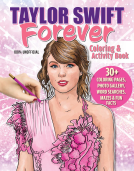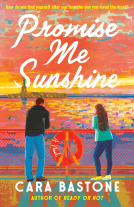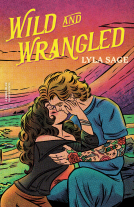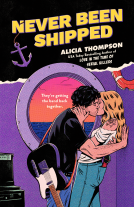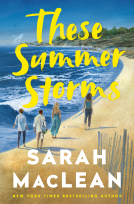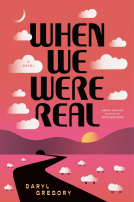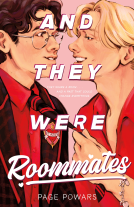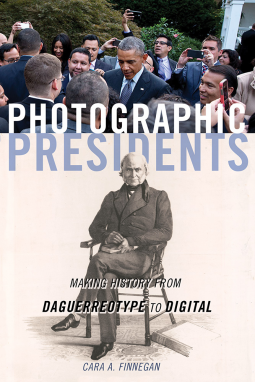
Photographic Presidents
Making History from Daguerreotype to Digital
by Cara A. Finnegan
This title was previously available on NetGalley and is now archived.
Send NetGalley books directly to your Kindle or Kindle app
1
To read on a Kindle or Kindle app, please add kindle@netgalley.com as an approved email address to receive files in your Amazon account. Click here for step-by-step instructions.
2
Also find your Kindle email address within your Amazon account, and enter it here.
Pub Date May 18 2021 | Archive Date Jun 04 2021
Talking about this book? Use #PhotographicPresidents #NetGalley. More hashtag tips!
Description
Lincoln’s somber portraits. Lyndon Johnson’s swearing in. George W. Bush’s reaction to learning about the 9/11 attacks. Photography plays an indelible role in how we remember and define American presidents. Throughout history, presidents have actively participated in all aspects of photography, not only by sitting for photos but by taking and consuming them. Cara A. Finnegan ventures from a newly-discovered daguerreotype of John Quincy Adams to Barack Obama’s selfies to tell the stories of how presidents have participated in the medium’s transformative moments. As she shows, technological developments not only changed photography, but introduced new visual values that influence how we judge an image. At the same time, presidential photographs—as representations of leaders who symbolized the nation—sparked public debate on these values and their implications.
An original journey through political history, Photographic Presidents reveals the intertwined evolution of an American institution and a medium that continues to define it.
Advance Praise
"Today, the camera, the press, and the presidency are inextricably linked. But how did we get here and, more importantly, how does that evolution inform the present visual and rhetorical landscape? Based on her longstanding research, writing and commentary as a 'presidential visual scholar,' there is no one better equipped to compose this picture than Cara Finnegan. This narrative weaves the evolution of a technology, a communications medium, and the highest office in the land into a vivid historical panorama. In current times, in an atmosphere in which visual politics can be all too affecting and effecting, Photographic Presidents places the visual presidency into a necessary frame."--Michael Shaw, Publisher, Reading the Pictures
Available Editions
| EDITION | Other Format |
| ISBN | 9780252085789 |
| PRICE | $22.95 (USD) |
| PAGES | 296 |
Links
Featured Reviews
This was an interesting topic that I hadn't thought that much about before, but it is an important part of how we get to see and learn about the Presidents. Photographic Presidents talked about the different types of photography and how we got to the digital age we now live in and its importance and how it made it easier and harder for presidents to be able to take photos at first because of how they had to stay so still.
Overall I did enjoy this book it was an incredibly quick read for a nonfiction book and didn't go overly in-depth about anything which is nice. I was expecting there to be more photos than there ended up being, but that was okay.
I did find the last chapter the most interesting because of how things had changed so rapidly from the 90s till the Obama presidency and how he put a new spin on things. I'm very interested now in seeing what the Biden white house is like when it comes to photos because we know what the Trump administration has been like and it's not been very nice.
If you want a quick read that helps you understand a little bit more about the media side of presidents this would be interesting for you.
 Jennifer M, Reviewer
Jennifer M, Reviewer
After reading the description of this book, I expected a lot of photos and some explanations of how photography and seeing presidents changed over time. It actually is very in-depth and full of information about the photographers and their processes. The photos that are included are some I have never seen and are very interesting. This is an interesting and unique topic and is definitely suited for those interested in the history of photography.
**I received and voluntarily read an e-ARC from NetGalley in exchange for an honest review. All thoughts and opinions are my own.**
It's amazing to see how far photography has come, and to see it age alongside the history of American presidents and how the two seemed to influence one another is a fantastic combination.
Overall, the book was full of information, but it could read a little bit dry at times. This book would be great for any photography buff or history buff in your life.
 Leyla J, Reviewer
Leyla J, Reviewer
A well written book if one is interested in photography and the history of photographs of presidents of America.
I did read it through, but found the lack of photos a drawback, but technically and historic it was interesting - as I did not realise the extent of changes within the photography industry, and the time progress from when it started.
Would be of interest to photographic students and practitioners.
For those interested in the history of photography and how it relates specifically to presidents, and how presidents became more "photographic"! I'm mainly only interested in photography and I still thought this book was quite interesting. Lots of information about the processes used, how presidents reacted and dealt with being photographed, and finally, the advent of social media and how that changed things.
A very in-depth look into all of this, while also getting a little insight into presidential personalities, in the small moments and in the big ones. Though for me particularly, some information was more interesting than others, I'm sure that anyone with these interests can find new facts and ideas from reading this!
There are photos scattered throughout, to highlight certain themes or moments, but not as many as I was expecting.
Thank you NetGalley and the University of Illinois Press for this e-ARC!
 Gordon J, Reviewer
Gordon J, Reviewer
A very concise interesting book that covers aspects of photographic history as well as being of interest to history lovers on its own. Insights into some of the most powerful men in the world and how they and others used photography
As an archivist that often works with historic photos, I really enjoyed this book and the ways the author underscored the significance of photography in our understanding and remembrance of historic moments. I would recommend this to anyone interested in American or presidential history, and anyone working in a cultural heritage field.
Photography’s History and Presidents’ Photos
In this book, the author has created not only a book showing photographs of presidents from John Quincy Adams to Barack Obama—as the title suggests—but also a history of photography (and how it impacted presidential photography). She broadly divides the book into four sections: daguerreotype; handhelds and half-tones; candid cameras; and social/digital media. At the start of each section, she provides a broad history of the development of photography at that moment and then details how the medium captured the presidents of that time. For a book essentially about photography, it has more text than you might imagine, but I found it fascinating to both trace the history of photography and how photographs have been used by the presidency. I felt for John Quincy Adams in the early 1840s as he struggled with always having photos taken of him he never liked. Yes, disliking seeing your own photo has been around as long as photography has been a part of our lives! The author also shows how political or cultural photographs became just about as soon as they started. For instance, people took a daguerreotype of themselves holding illustrations of George Washington; after the assassination of McKinley, a mad scramble to find his “last photograph” ensued. The author notes that Barack Obama allowed not only a lot of access to what happened behind the scenes of his presidency but also used social media to put out a highly curated stream of those photos. A fascinating book for both photographers interested in the history of their craft and people with interests in history or the US presidents.
 Sherron S, Reviewer
Sherron S, Reviewer
A chronological study of the American presidents (beginning with George Washington!) in context of the ever developing world of photography. The author shares with us her love of history, photography, and presidential ephemera and keepsakes in this analysis of photography as a tool.
Chock full of photographs, this volume provides primary materials for us to examine; however is no TIME LIFE coffee table book to mindlessly browse. Generously peppered with descriptions of the prevailing portraiture tools, presidential perspectives and reactions to those tools, the author provides a detailed and compelling analysis,
Although the purpose of this study is historical, this book provides strong sociological commentary. Over time, these powerful men learn how to position their better side to confer a depiction of strength, health, and vitality. It’s clear that these powerful male figures also understand the power of the “male gaze” as they strictly forbid photography of their nubile female relatives.
This book is excellent as a narrowly focused history book. As is the case with the linear format of books, it’s difficult to relay the breadth of modern multimedia and the presidents who use them.
Notably lacking is any depiction and analysis of the former President Trump and his flat-footed relationship with photography.
Thanks for the opportunity to review an ARC NetGalley.
 Jasmine B, Librarian
Jasmine B, Librarian
I thought this book was quite an original take on photographic history. It was a different subject than I have normally read about, which is mainly art photography or social photography. This book gives an important discussion on how and why photographs have been important to the presidential history. I really liked the historic aspects of photography that was involved with the photographing of presidents. The book adds to my understanding and the importance of photographs in politics. I especially liked the Obama section as he really went all out with his photographic image as part of his link to the American people. The book is very in depth and I felt that even if you had near to no photographic or presidential knowledge, the book would be quite informative. I wish that this was around when I did my photography essays as I would have loved to explore this concept of presidents and photography. A must read for those that study sociological photography/documentary photography.
A fascinating look at the history of US presidential photography, from Washington to Obama. Finnegan thoroughly covers everything from daguerreotypes of paintings of the first presidents, to the Obama White House's Flickr stream. Will appeal to American history buffs, photography enthusiasts, and anyone who enjoys a good nonfiction book.
Wow. I found Photographic Presidents to be a really interesting read. I really enjoyed it. Although I myself am not really that interested in American politics or America's presidential history, I really enjoyed reading about some of the presidents mentioned here - especially John Quincy Adams - and thought the writer did a fantastic job of revealing the individual personalities of the presidents in relation to how they reacted to photography.
The way in which some photographic processes were explained was really great. I would have a liked a little more emphasis on those things personally, but I can understand why they wouldn't be there if it's not completely relevant to the narrative. I learned a lot about certain processes that I hadn't quite understood before as the writer explained them in a very clear and concise manner.
That's the thing with this book. It is so easy to read! It flowed really well, everything made sense, and it was captivating from start to finish. There's always the worry that these kind of books would end up dull and boring, but this one certainly didn't drop the ball. It was a very insightful book and I really enjoyed it.
 Educator 813663
Educator 813663
This is a wonderful text that serves as an overlap between history and cultural theory, and using the idea of technology to explore the shifts in politics, culture, and the way we perceive leadership. Finnegan's focus on 'the photographable president' rather than 'presidential photography' is enough alone for a riveting discussion in a classroom, but also places this text on the frontline of contemporary historical study. Further, it is accessible to read, making it ideal for undergraduates and non-academics, but also for more seasoned folks as well. It is expertly researched and supported with a substantive source list and theoretical foundation.
